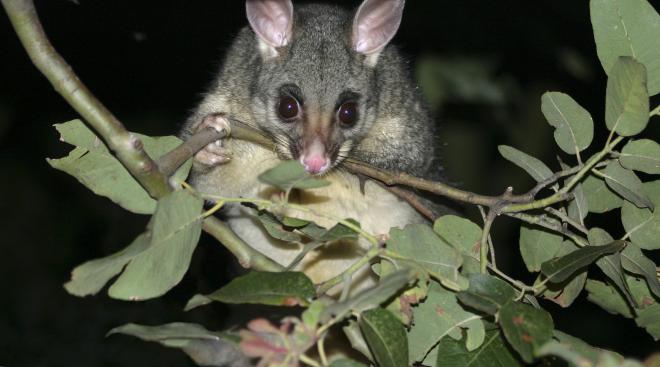Controlling invasive predators with local research
Brush-tailed possums are an ecological disaster in New Zealand. An invasive species, they eat native bird eggs, damage trees, and can even carry bovine tuberculosis - a potentially fatal disease for cattle.
Dr Daniel White, a population geneticist and bioinformation for Manaaki Whenua - Landcare Research, is using NeSI to map the genetic information of brush-tailed possums.
His team are working on a project called Achilles Heel. Together, they’re designing a way to switch off genes specific to brush-tailed possums, for use as a targeted form of population control.
“The idea is to find variation in genes involved in the vital processes of our target species - the brush-tailed possum - compared to non-target species. Then we design a gene-silencing assay; in this case we’re looking at small interfering RNA to knock down these genes,” Daniel says.
Daniel is searching for specific gene combinations within ribonucleic acid (RNA). RNA acts like a messenger within a cell, taking information from DNA in the cell’s nucleus and bringing it to areas such as the ribosomes, which work like factories to produce needed proteins.
Silencing or interfering with this RNA can shut off vital functions for the body, causing effects like heart or liver failure. By finding segments of RNA that exist only in brush-tailed possums, Daniel and his team may discover a mechanism for targeted pest control. Unfortunately, the genetic information of brush-tailed possums is not yet well-mapped.
“That’s where our use of NeSI comes into play. The challenge is to find to sequences empirically because there isn’t anything existing to work from,” Daniel says.
A single sample of tissue can have 180 million reads - snippets of genetic information recorded by a gene sequencer. Daniel and his team are focusing on two sample tissues from the heart and liver of brush-tailed possums. They send samples to the Seoul-based genetics company, Macrogen, before reading the sequences using NeSI’s new Mahuika cluster.
From each of those 180 million reads the team then have to rebuild how the possum’s transcriptome - all the RNA expressed within the sample - was originally put together. Finally, they compare that genetic information with marsupial relatives of the brush-tailed possum that are already mapped.
“At the moment there’s information on koalas, Tasmanian devils, the Tammar wallaby and the North American opossum. We compare them to pull out the relevant orthologue gene - meaning genes unique to the brush-tailed possum.”
Daniel’s team were planning to discover target genes by looking at the DNA sequence of these close relatives. Then they would develop RNA-silencing techniques by cloning and sequencing genes in the lab, then testing them in a lengthy trial-and-error approach. However, winning funding from the Bioheritage National Science Challenge allowed them to use NeSI to streamline this process by directly mapping the brush-tailed possum transcriptome.
“I have to say that to get to the end point of the project we saved a lot of time. The assembly of the transcriptome hasn’t taken too long. It took three or four weeks to assemble and pull out the relevant genes. If we’d been in a lab, to get to that stage it might have taken six months, maybe more,” Daniel says.
Daniel worked with Peter Maxwell from NeSI’s support team to collect and compare this genetic information. Daniel says Peter played an important role in the project, helping the team with software troubleshooting and working with the supercomputer.
Another advantage of using NeSI is that the full transcriptome from each sample will be publicly available. Lab experimentation leaves researchers with valuable results but they can be too specific to have wide-ranging applications. With the transcriptome mapped, future research projects can use that same information, saving time and money.
Through their research, the team have found unique target RNA and are now testing silencing techniques in vitro. If effective, the research may be used by other organisations to control the population of brush-tailed possums.
Daniel and project leader Dr. Brian Hopkins (MWLR) hope their research will feature in the Predator Free NZ project. This project aims to rid New Zealand of invasive predators by the year 2050, restoring this country’s native wildlife and protecting livestock. Genetic research is a vital part of finding safe, effective population control and NeSI is helping local researchers work towards a predator free 2050.
---------------------
Do you have an example of how NeSI platforms have supported your work? We’re always looking for projects to feature as a case study. Get in touch by emailing support@nesi.org.nz.







